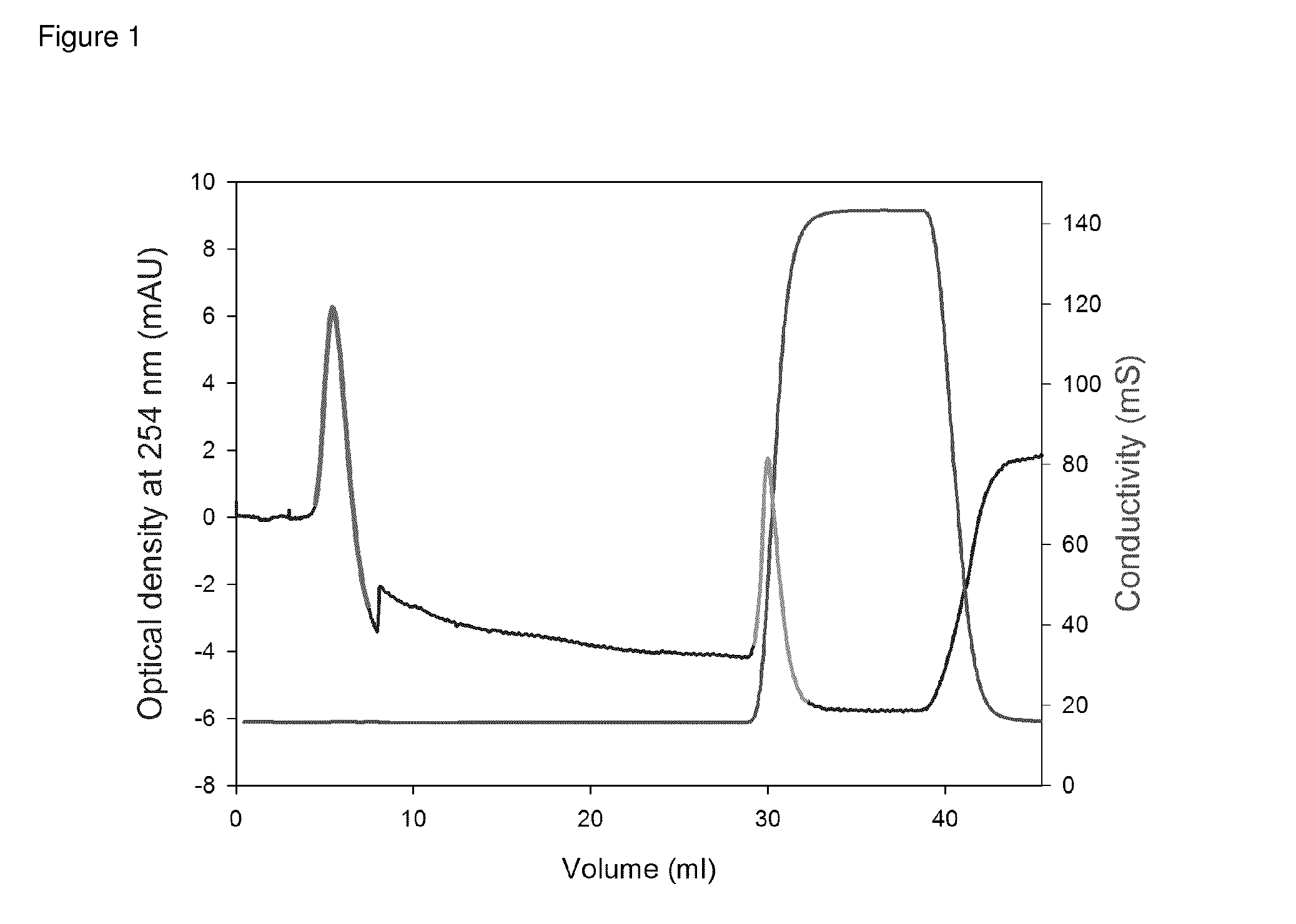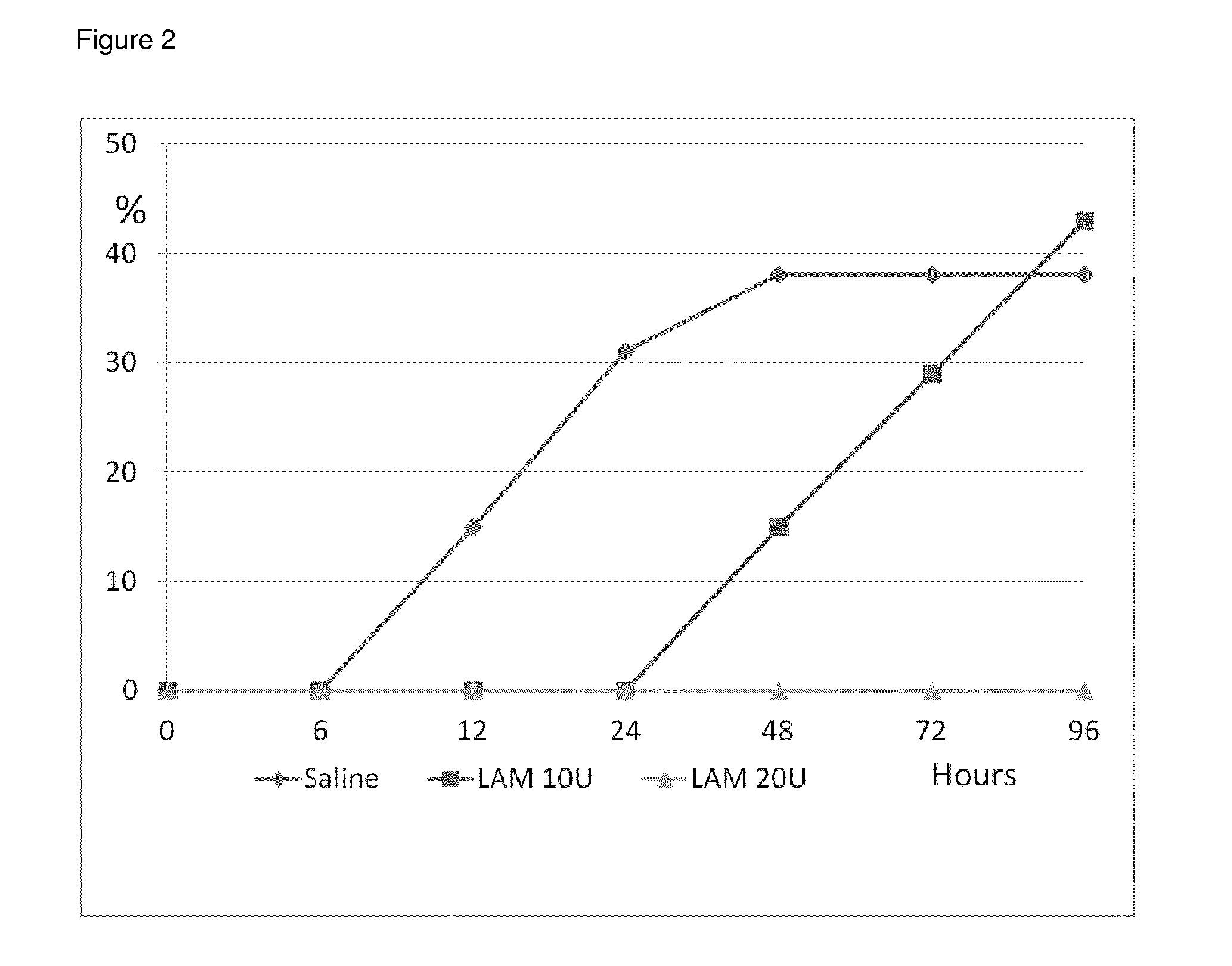Method for the prevention and treatment of sepsis
a sepsis and treatment method technology, applied in the field of medical treatment, can solve the problems of multiple organ dysfunction syndrome (mod), decreased urine production, and altered mental status, and achieve the effects of preventing clinical signs of sepsis and related disorders, prolonging survival, and reducing mortality
- Summary
- Abstract
- Description
- Claims
- Application Information
AI Technical Summary
Benefits of technology
Problems solved by technology
Method used
Image
Examples
example 1
Preparation of Low Affinity Material from Unfractionated Heparin
[0119]Unfractionated Heparin (UFH) is a mixture of polysaccharide chains. See Casu, B. (1989). “Structure of heparin and heparin fragments.” Ann N Y Acad Sci 556: 1-17 for a review. The composition of the chains and their length varies. Only chains with specific composition have anti coagulant activity. These molecules—so-called pentasaccharide domains—can bind strongly to antithrombin (AT) (Casu, B., P. Oreste, et al. (1981). “The structure of heparin oligosaccharide fragments with high anti-(factor Xa) activity containing the minimal antithrombin III-binding sequence. Chemical and 13C nuclear-magnetic-resonance studies.” Biochem J 197(3): 599-609).
[0120]When UFH is passed through a column that contains immobilized AT, the molecules that contain the pentasaccharide domain bind to the column, whereas other material passes. Unbound material is called Low Affinity Material (LAM), whereas material that does bind is called ...
example 2
Preparation of an AT-Column
[0121]The AT-column was prepared according to the package insert of a 5 ml HiTrap column (GE Healthcare®). After washing the isopropanol from the column ˜2.5 mg AT in 5 ml coupling buffer was applied to the column. Then the described procedure to couple the protein and to wash the column was employed (according to the package insert). Finally the column was equilibrated with 140 mM NaCl, 20 mM Tris (pH 7.4).
example 3
Separation of UFH into LAM and HAM
[0122]To the column was applied 2 mg heparin. LAM was eluted with 140 mM NaCl, 20 mM Tris (pH 7.4) and HAM with 2 M NaCl, 20 mM Tris (pH 7.4). The last buffer was applied in a block gradient. In FIG. 1 an example of the elution pattern is shown.
[0123]To obtain a large amount of LAM, the procedure described in FIG. 1 was repeated several times.
[0124]To determine whether the LAM was free of HAM two tests were used. Firstly, collected HAM was reapplied to the AT-column and run as described in FIG. 1. No HAM-peak was found. Secondly the effect of LAM on thrombin generation was measured. The reaction mixture (120 μl) contained normal pooled plasma in a 1.5× dilution, 3 μl LAM or buffer, 4 μM DOPL (60% DOPC, 20% DOPC and 20% DOPE), 5 pM tissue factor (Innovin), 100 mM CaCl2 and 417 μM ZGGR-AMC. The reaction was started with CaCl2+ZGGR-AMC. Thrombin generation was measured as described by Hemker, H. C., P. Giesen, et al. (2003). “Calibrated automated throm...
PUM
| Property | Measurement | Unit |
|---|---|---|
| temperature | aaaaa | aaaaa |
| temperature | aaaaa | aaaaa |
| mean arterial pressure | aaaaa | aaaaa |
Abstract
Description
Claims
Application Information
 Login to View More
Login to View More - R&D
- Intellectual Property
- Life Sciences
- Materials
- Tech Scout
- Unparalleled Data Quality
- Higher Quality Content
- 60% Fewer Hallucinations
Browse by: Latest US Patents, China's latest patents, Technical Efficacy Thesaurus, Application Domain, Technology Topic, Popular Technical Reports.
© 2025 PatSnap. All rights reserved.Legal|Privacy policy|Modern Slavery Act Transparency Statement|Sitemap|About US| Contact US: help@patsnap.com


